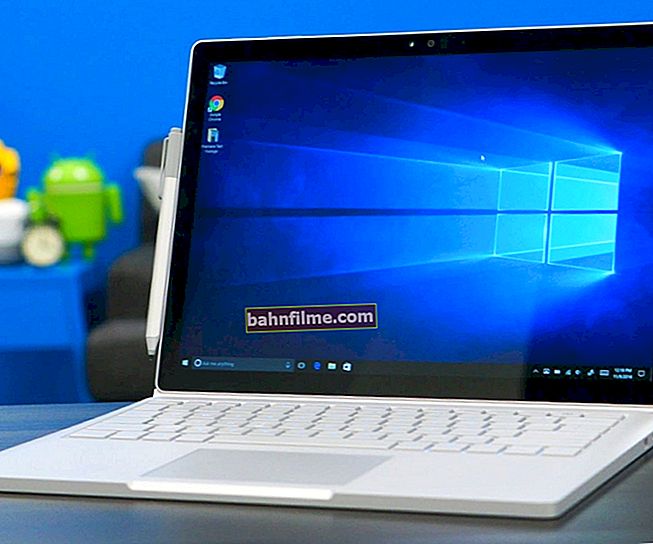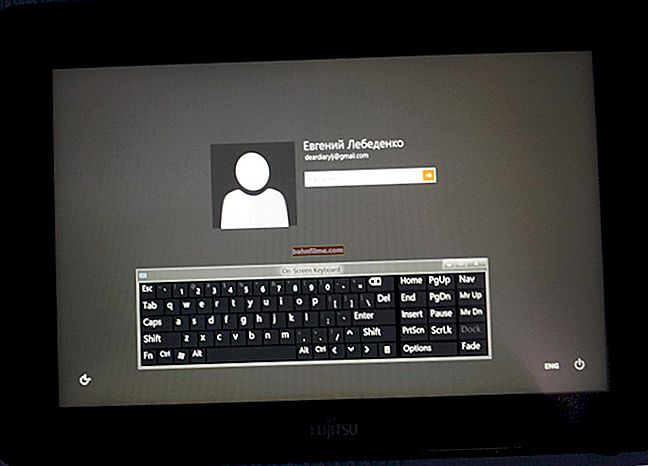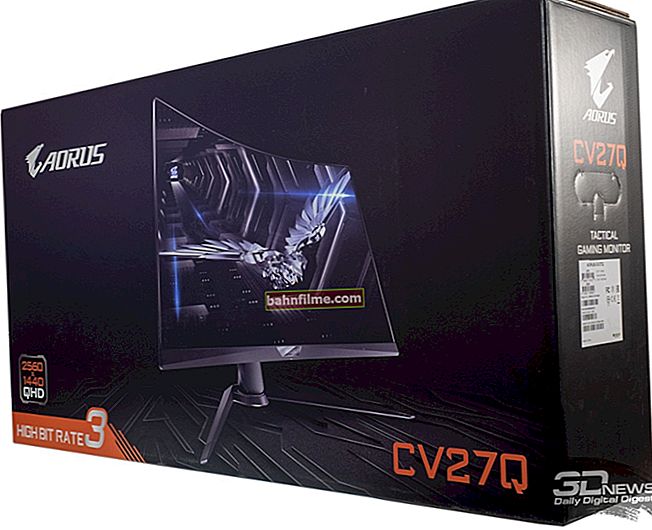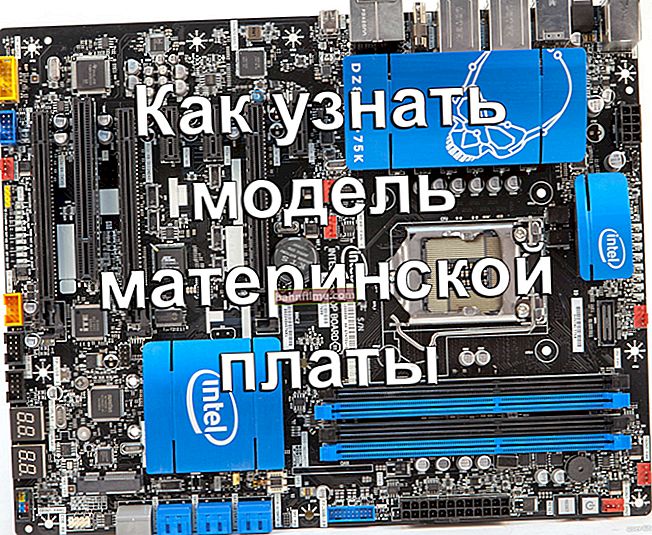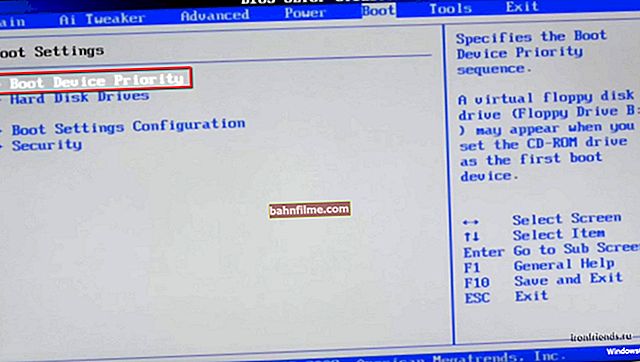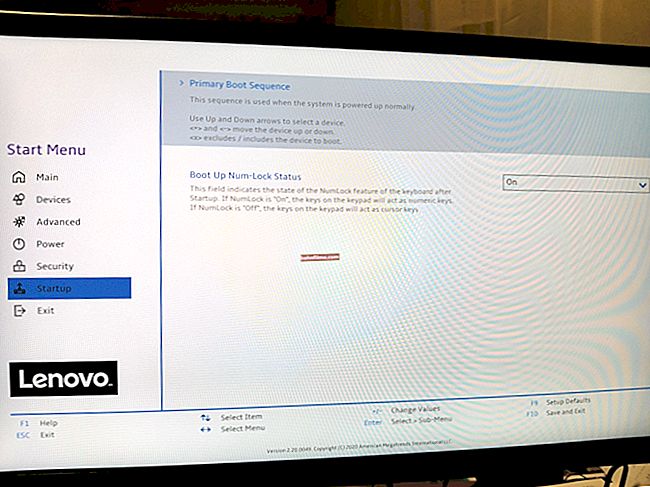
User question
Hello.
My brightness on my laptop began to spontaneously change: with a dark image, the brightness drops, and with a light one, it recovers to its normal level.
How can you get rid of this problem, otherwise, because of it, your eyes began to get tired? OS: Windows 8, graph. accelerator (video card) Intel HD 4000 (built-in).
Good day!
This problem began to appear more and more often after the release of Windows 8 (in this OS, it became possible to adaptively adjust the brightness, depending on the picture on your screen ☝). Also, some laptops are equipped with special software and sensors that determine the level of illumination in the room, and according to it, adjust the brightness of the screen.
There is nothing wrong with that, but in certain cases such a change does not allow working normally and interferes with the user. In the article I will tell you in detail how you can turn off this spontaneous change in brightness ...
*
Eliminate Monitor Brightness Automatically
1) Disable adaptive brightness control
This is the first thing to do. This option is available in Windows 8, 8.1, 10. Whoever has Windows 7 can omit this part of the article.
You need to open the power settings section:
- or through the Windows Control Panel at the following address: Control Panel \ Hardware and Sound \ Power
- or by pressing the Win + R keys and entering the powercfg.cpl command (see screenshot below).

powercfg.cpl - open power settings
In power settings: follow the link "Setting up the power scheme" in the selected mode (in the screenshot below - this is balanced mode... The selected mode is marked in bold black).

Power plan settings
Next, open the link "Change advanced power settings" (screen below 👇).

Change advanced power settings
Now find the tab among the settings "Screen" and open it. There are 3 key settings in the tab here:
- screen brightness on battery and mains: set the values that suit you;
- brightness level of the screen in dimmed mode: set exactly the same values that you have set in the tab "Screen brightness";
- turn off the adaptive dimming from the mains and the battery (see screenshot below).

Power supply - turn off the adaptive regulation, and set the same brightness
Now save the settings and try looking at light and dark pictures (for example) to see if the brightness changes. As a rule, such settings completely eliminate this problem ...
Update 10.06.2018
If you are using Windows 10, pay attention to its control panel (to go to it, press Win + i). In chapter "System / Display" there is a special. a setting that allows the laptop to change the brightness when the ambient light changes in the room. Disable it too!

Change brightness automatically ...
2) Setting the power supply of the video card
The laptop may itself dim the brightness in certain operating modes. For example, IntelHD graphics cards support display power-saving technology, extended gaming life on battery power. Similar technologies exist in both AMD and nVidia.
First you need to go to the settings of the video card driver (you can use the control panel - see the screen below), or you can go through the tray icon next to the clock.
👉 Important! There is no Intel HD, nVidia or AMD Radeon video driver icon in the tray next to the clock and on the desktop - what to do ->

Intel Graphics Settings (tray)

Control Panel - Large Icons - IntelHD Settings
👉 Important!
If you do not have a tray icon, and the control panel also does not have a link to graphics settings, most likely you do not have the drivers installed.Try using programs to auto-update drivers.
Next, you need to open the section "Power supply" and check two tabs: " Mains operation " and "Battery operation" .
They need to set the following:
- set the power saving parameter to the maximum performance mode;
- turn off extended battery life for games;
- disable display power saving technology (screen below - see arrows).

Switching on max. productivity
👉 Note!
For example, in video cards from AMD - you need to open the "Power" section, then turn on maximum performance, and turn off the Vari-Bright technology (this is AMD technology that allows you to adjust the brightness).

Vari-Bright disabled! (AMD Graphics settings) / Clickable
3) Sensor monitoring service
There is one service in Windows that monitors sensors and adjusts the display illumination, depending on the illumination of the room in which your device is operating.
I can say that sometimes the service does not work correctly and can affect the brightness adjustment, even if you do not have any sensors!
How to disable sensor monitoring services
Open a window with services: the easiest way is to press the keys Win + R , enter services.msc , press Enter ... The method works in all versions of Windows.

Opening services - services.msc (universal method)
Next in the list, you need to find the service "Sensor monitoring service" , open it.
In the graph "startup type" put [disabled], and stop the service itself, so that the state is listed as "Stopped" (see the screen below 👇).

Sensor monitoring service / disable
Then save the settings and restart the laptop.
4) Laptop Control Center
Certain laptop models have a control center among the software installed with the drivers. For example, in the line of VAIO laptops from SONY - there is VAIO control center .
In this control center, for example, you first need to open the tab "Power supply" and set high performance, as well as disable the function that extends battery life (see screenshot below).

High Performance / Power Supply / VAIO Control Center
Next, you need to open the tab "Image quality" and turn off the option to automatically adjust the brightness (screenshot below 👇).

Image quality / VAIO control center
Actually, it is hardly possible to give a description for each of these centers. Above is VAIO Center as an example of such software.
Something similar is also in Lenovo laptops: various night modes, dynamic changes in brightness, contrast and other things can significantly change the quality of the picture on the screen. It is recommended to turn them all off (at least at the time of setup and adjustment).

Lenovo Settings - display settings
5) Iron problems
A change in screen brightness can be associated not only with software settings, but also with faulty hardware. When can you determine that the laptop hardware is to blame:
- if not only the brightness has changed on the screen, but also stripes, ripples, dots began to run (as in the example below);
- if when you add / decrease the brightness on the monitor - absolutely nothing happens;
- if the brightness changes even without changing the picture on the screen and without changing the lighting mode in the room;
- if the brightness is different in different parts of the screen.
*
👉 Help!

If stripes and ripples are displayed on your monitor (example below) - I recommend that you read another article of mine

Stripes and ripples on the screen / As an example
*
Happy work!
👋
First publication: 24.12.2016
Article revised: 01/05/2020
